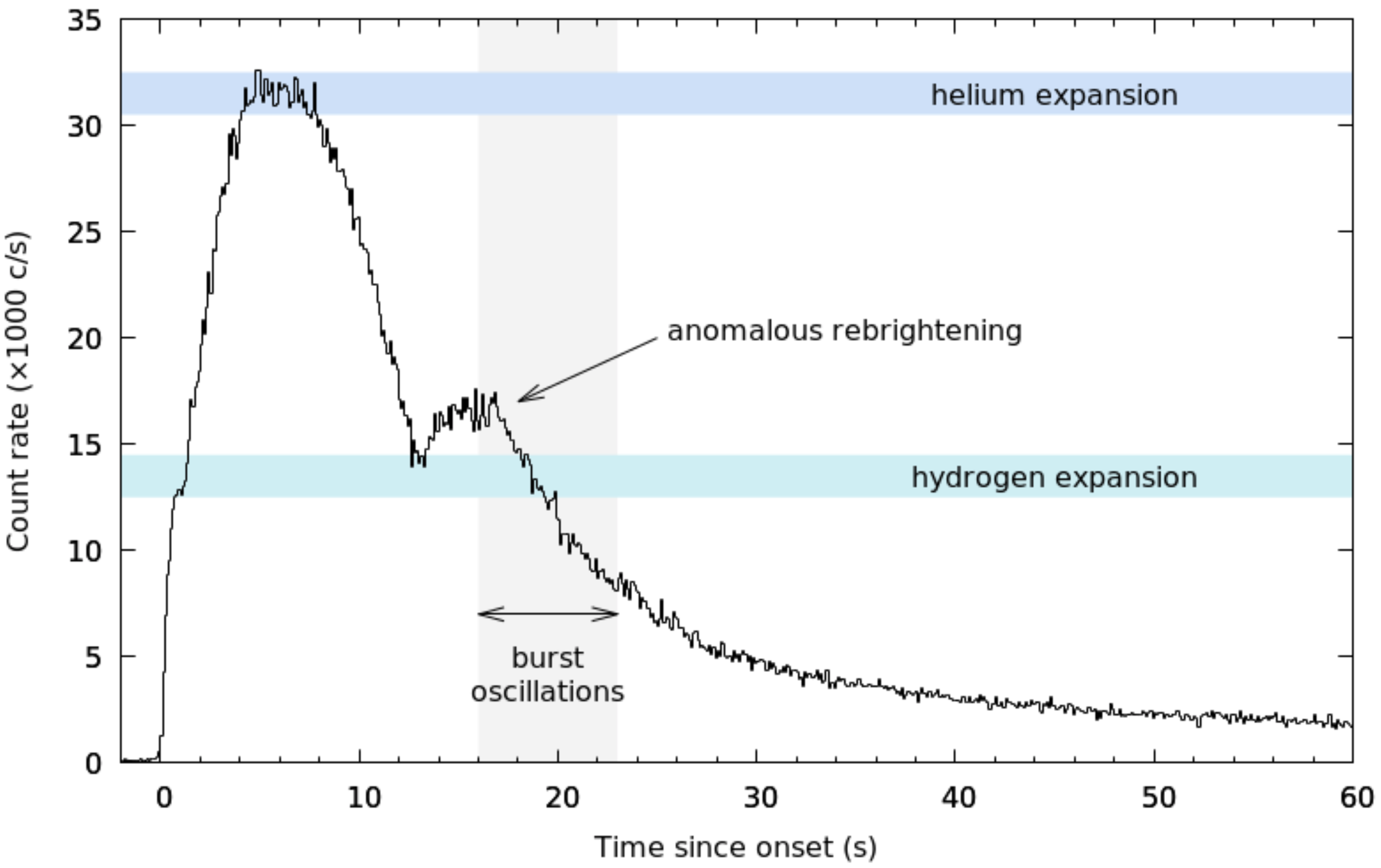NICER / ISS Science Nugget
for September 12, 2019
SAX J1808.4-3658 delayed-helium bursts seen in exquisite detail
The intensity, duration and overall shape of a thermonuclear X-ray burst are determined almost entirely by the specific
nuclear reactions that power these events, and therefore by the composition of a neutron star's atmosphere, which provides
the nuclear fuel. For instance, a burst from a helium atmosphere will be brighter and last longer than one that originates
in a hydrogen atmosphere.
The accreting pulsar SAX J1808.4-3658 is a system that shows delayed-helium bursts: that is, hydrogen is fusing ("burning")
stably, allowing a thick layer of helium to build up. Every few days, that helium layer becomes dense and hot enough that
it ignites, rapidly burning away the entire layer in a runaway thermonuclear explosion.
On August 21, NICER observed such an X-ray burst and it was a very unusual one. By far the
brightest X-ray burst NICER has ever detected, NICER had the sensitivity to pick out distinct stages in the evolution of the
intensity, observed a rare re-brightening when the atmosphere should have been cooling, and detected coherent intensity
oscillations at the 2.5 millisecond neutron spin period – a sign that the surface temperature is asymmetric.

Figure:
This figure shows the X-ray light curve of a bright X-ray burst from SAX J1808 that was observed with NICER on 2019 August
21. The colored bands highlight some of the unusual features in this burst.
One interpretation of this rich set of features indicates that we are seeing the intensity levels at which the radiation pressure
from the thermonuclear reactions is strong enough to lift individual atmospheric layers off of the star. If correct, this
is the first burst in which the expansion and contraction of distinct atmospheric layers could be resolved, providing a
new clue toward understanding the origin of re-brightening and burst oscillations.
This exciting result is the subject of a paper by Peter Bult that was submitted to Astrophysical Journal Letters this past week.
<< Previous
Main Index
Next >>